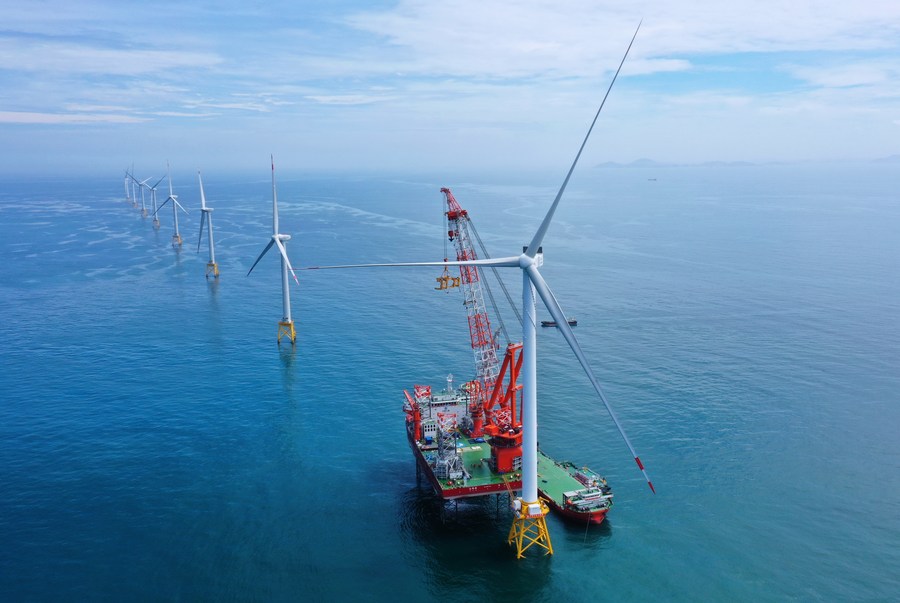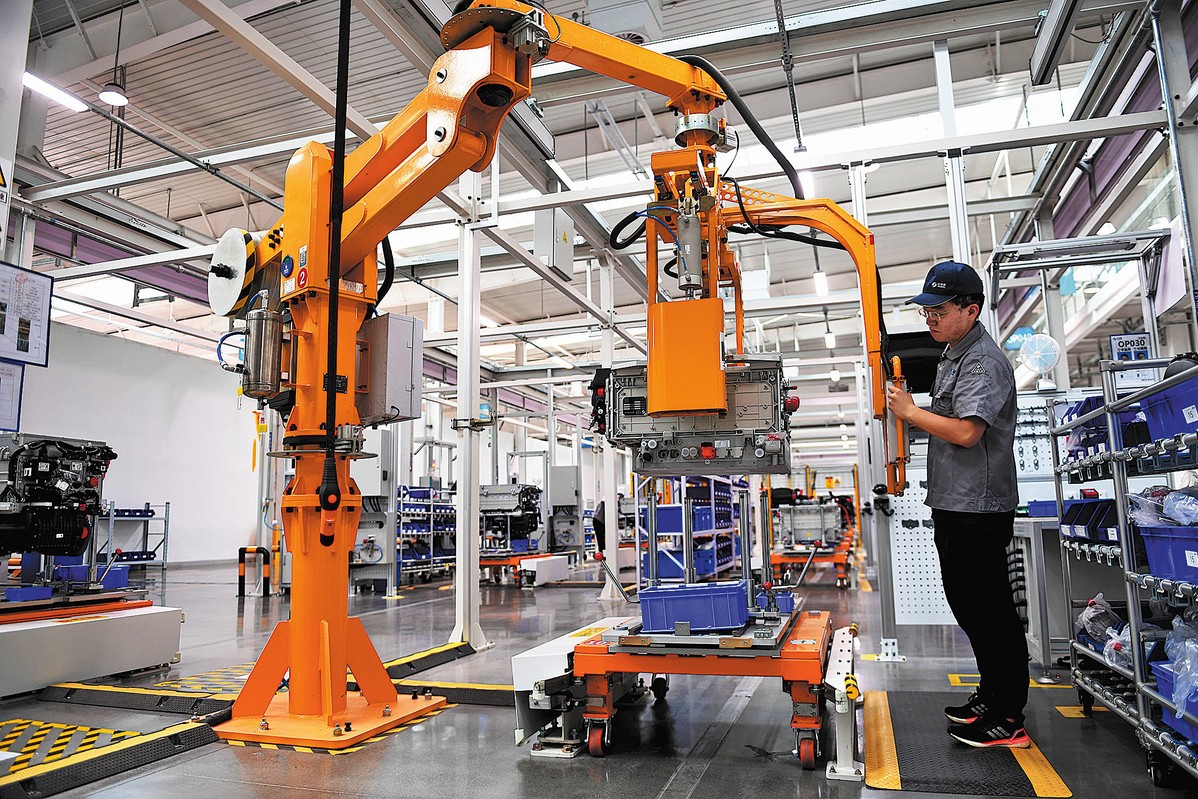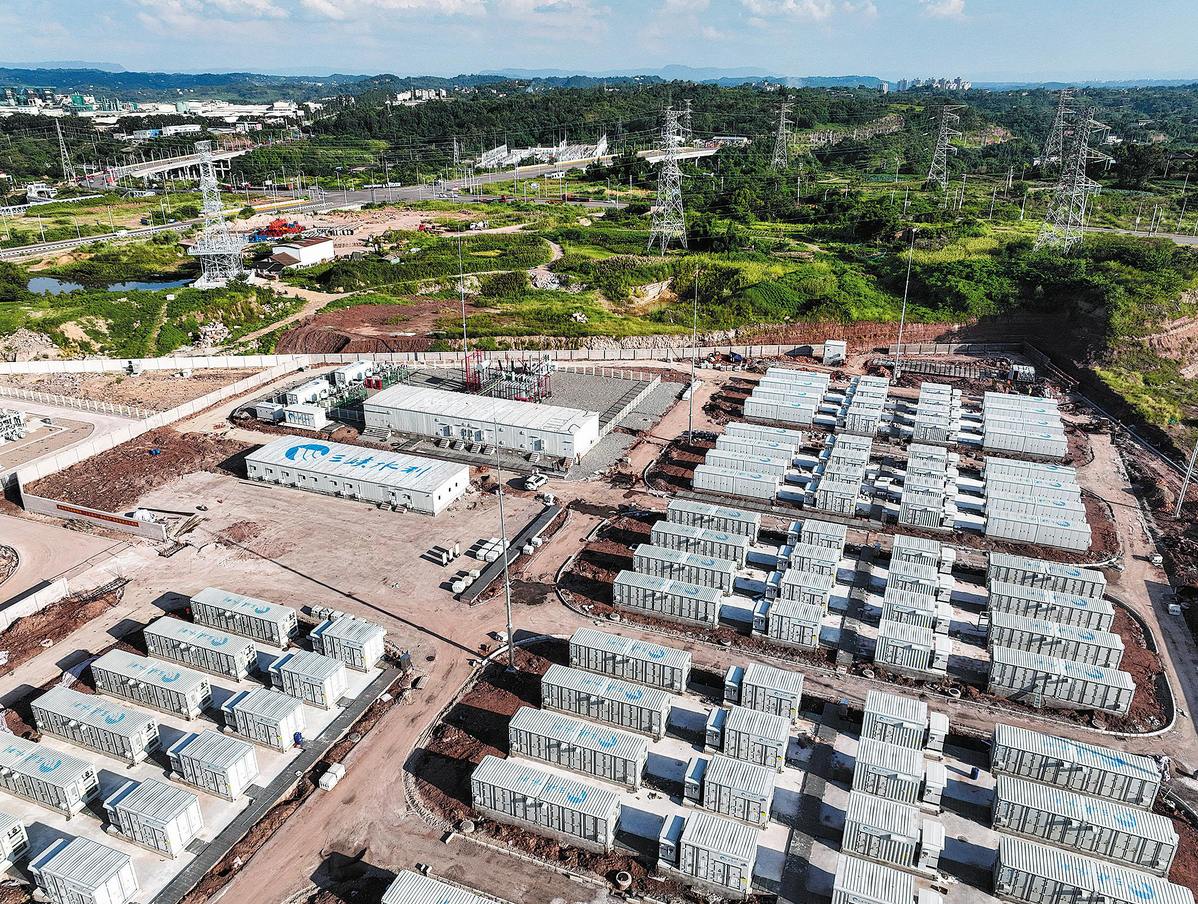Sustainable energy landscape takes shape

Renewables rise, helping nation to transition toward green, low-carbon development

A timely combination of technological innovation, mega-sized hardware and strategic investments has made China's renewable energy industry not only the world's largest system in that category, but a driver of green and low-carbon development, thereby helping the country in its pursuit of high-quality development, said industry experts and market observers.
China's energy technology innovation capability has continued to improve over the past few years. Technologies related to high-capacity offshore wind turbines, tidal energy generation and crystalline silicon photovoltaic technology are undergoing accelerated upgrades, according to Rao Jianye, vice-president of the China Electric Power Planning &Engineering Institute.
Many of the innovative projects are already in operation. These range from the Baihetan hydropower station to the world's largest desert-based wind and solar energy project in the Kubuqi Desert and the Shengli Oilfield million-metric-ton-level Carbon Capture, Utilization and Storage project, he said.
China's total installed capacity of hydropower, wind power, solar power and biomass power generation ranks first in the world now.
Huang Runqiu, minister of ecology and environment, said the technological progress and large-scale application of renewable energy in China have greatly reduced the cost of renewable energy in recent years.
Figures released by the ministry show that China supplies 50 percent of the wind power equipment and 80 percent of the photovoltaic module equipment to the rest of the world. In 2021, the installation cost of global photovoltaic equipment had decreased by about 82 percent compared with the cost in 2010, while the installation cost of wind power equipment had decreased by at least 35 percent, the ministry said.
Despite the large-scale development of new energy sources, their reliable operational capacity remains below 5 percent, making them unreliable for substantial substitution, said Rao.

It is essential to further develop new technologies, such as wind and solar power forecasting, integrated control technology, new energy storage and load control technology, he said.
Li Sheng, president of the China Renewable Energy Engineering Institute, said it is necessary to step up efforts in research and development in cutting-edge technologies to support the energy transition.
He suggested more efforts should be made in reducing the deployment costs of mature technologies while stepping up R&D investment for new-age technologies, allocating resources aimed at advancing emerging technologies in the energy sector to further facilitate the transition to a more sustainable and efficient energy landscape.
China already has advantages in engineering construction, equipment manufacturing and innovative R&D, taking third place in global energy transition rankings, thus contributing significantly to international renewable energy development, and relevant investments and trade, he said.
China ranks second globally in the Energy Technology Transition Index, according to the Energy Transitions Index Blue Book, unveiled by the China Renewable Energy Engineering Institute on Sept 7.
Liu Jizhen, an academician at the Chinese Academy of Engineering, said although new energy formats like wind and solar power produce low carbon emissions, they have some obvious drawbacks like intermittency, volatility and inconsistency.
As a new wave of energy revolution accelerates, it is also crucial to accelerate the development of ultra-modern technologies, in order to ensure a safe and reliable replacement of new energy, with emphasis on new energy storage and hydrogen energy, he said.
New energy storage refers to electricity storage processes that use electrochemical, compressed air, flywheel and super-capacitor systems, but not pumped hydro.
In-depth research in fields such as large-scale offshore wind power development and integrated management of generation, grid, load and storage are as essential, Liu said.
According to the two institutes, the construction of new energy storage facilities in China has been accelerating in recent years. By the end of 2022, the installed capacity of new energy storage projects across the country had reached 8.7 million kilowatts, with an additional capacity exceeding 4.5 million kW.
Among these, the northern and northwestern regions have relatively large installations, accounting for about 55 percent of the national total. From January to June, about 8.63 million kW of newly added installations were put into service. This took the total installed capacity of newly operational new energy storage projects in the country to 17.33 million kW by the end of June.
According to Li Chuangjun, director-general of the New Energy and Renewable Energy Department of the National Energy Administration, China's new energy innovation has gone through technology introduction, digestion and absorption, and re-innovation in recent years.

The latest Chinese-developed wind turbine, which is also the world's first 16-MW ultra-large offshore wind turbine, can generate 66 million kilowatt-hours per year, equivalent to the electricity consumption of 36,000 families in one year.
Hundreds of sensors and laser radars scattered over the whole machine can sense temperature, humidity, wind speed and other information to track the running state of the turbine and adjust the angle and generation power automatically.
Li said China's wind power sector has surpassed international levels in terms of technology of large-scale units and floating units, with breakthroughs made in key components such as spindle bearings of high-power units and ultra-long blades.
Crystalline silicon photovoltaic technology in China has also continued to develop, with the efficiency of domestically developed perovskite cells, a next-generation photovoltaic battery, reaching 26 percent, a new world record, he said.
Li Zhenguo, president of LONGi Green Energy Technology Co Ltd, a leading photovoltaic module supplier, said technological innovation is the core driving force behind the progress made in the photovoltaic industry so far.
The improvement of battery conversion efficiency has played a key role in this regard, he said.
According to Rao, thanks to the technological advances, China's energy supply capacity has significantly strengthened over the past few years.
Figures released by the China Electric Power Planning & Engineering Institute reveal that in 2022, the total primary energy production reached 4.66 billion tons of standard coal, up 9 percent year-on-year.
Nonfossil energy power generation achieved new breakthroughs, with the installed capacity of nonfossil energy power generation reaching 1.27 billion kW, accounting for nearly half of the total.
Wind and photovoltaic power installations exceeded 120 million kW, and their power generation surpassed 1 trillion kWh for the first time, the institute said.
Energy storage and transportation infrastructure has been further improved and power transmission channels have continued to develop. Oil and gas storage and transportation facilities have been continuously strengthened while the scale of new energy storage and pumped storage hydropower has reached new heights, the institute said.
According to the Report on China Electric Energy Development 2023 released by the institute in Beijing in August, China's energy consumption continues to exhibit a trend of firm growth.
In 2022, the total energy consumption in the country reached 5.41 billion tons of standard coal, up nearly 3 percent year-on-year. The share of nonfossil energy consumption has increased to 17.5 percent, while the proportions of petroleum and natural gas consumption have decreased to nearly 18 percent and more than 8 percent, respectively.
Coal continues to play a major role in ensuring energy supply, with its consumption share rising to 56 percent, it said.
zhengxin@chinadaily.com.cn























